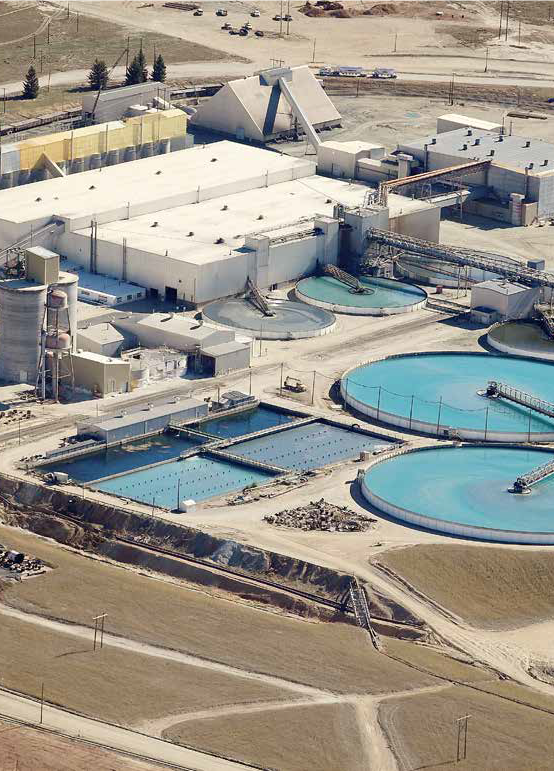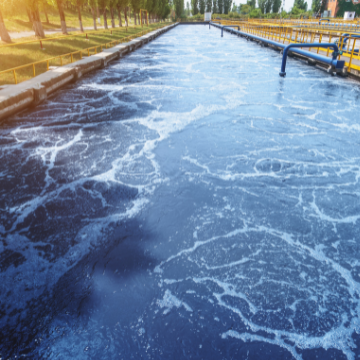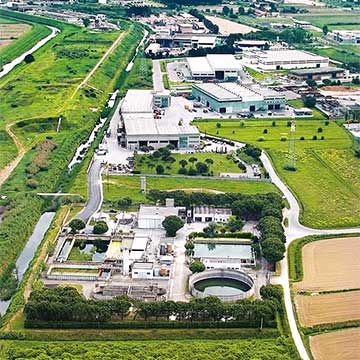Choose a different country or region to see the content specific to your location
Select Your Country/Region
Current Region:
 USA (EN)
USA (EN)
- Industries and Applications
- Industrial Wastewater Treatment
Choose a different country or region to see the content specific to your location
Current Region:
 USA (EN)
USA (EN)
Industrial wastewater consists of used water from a variety of manufacturing and industrial processes, including those in the food and beverage industry, textile and footwear production, electronics manufacturing, as well as more intensive sectors such as mining, oil and gas extraction, and chemical production. This water is integral to both the production and cleaning processes within these industries. Once utilized, the water is classified as wastewater.
Numerous industries are responsible for generating industrial wastewater, and it is critical to treat this water prior to its release into the environment.
Regulations and environmental standards mandate the removal of pollutants—both living organisms and non-living substances like metals and solid particles—from the wastewater. This purification process is essential to ensure the water can be safely returned to natural water bodies or land, or reused within the industrial processes themselves.
An industrial wastewater treatment plant (IWTP) is a facility designed to treat and manage the wastewater generated by industrial processes. Industrial processes can produce a wide variety of pollutants and contaminants, including chemicals, heavy metals, organic compounds, and suspended solids. The primary goal of an IWTP is to remove or reduce these contaminants from the wastewater to meet environmental regulations and ensure that the treated industrial wastewater can be safely discharged or reused.
Here are the key components and water treatment processes typically found in an industrial plant:
In many cases, the incoming wastewater undergoes a pre-treatment phase. This step involves the removal of large solids, debris, and any materials that might damage or clog downstream equipment. It may also include pH adjustment to make the water suitable for further treatment processes.
Primary treatment involves the physical separation of solids and liquids. This is often done using settling tanks (clarifiers) where gravity allows the heavier solids to settle at the bottom, forming sludge, while the cleaner water is removed from the top. In this phase, one main process is the filtration.


Secondary treatment is designed to remove solids that are dissolved and suspended biological, organic matter. Common secondary treatment methods include activated sludge processes, trickling filters, and sequencing batch reactors. These methods use microorganisms to break down organic contaminants in the water. In this phase, one main process is the aeration, which is also called the biological process.
MBBR (Moving Bed Biofilm Reactor) and Granular Sludge Treatment are advanced biological processes that offer advantages in terms of treatment efficiency, flexibility, and reduced footprint.
They are commonly employed in the modern aeration process in wastewater treatment systems to meet stringent discharge standards and environmental regulations.
Tertiary treatment is an additional step that further polishes the effluent to remove remaining contaminants. This can include additional filtration, chemical treatment (e.g., using chlorine or UV disinfection), and nutrient removal (e.g., nitrogen and phosphorus).
Some industrial wastewater streams may require more advanced treatment, such as membrane technology filtration, reverse osmosis, or advanced oxidation processes, depending on the specific contaminants present.
Mechanical Vapor Recompression (MVR) is a method used in wastewater treatment processes to concentrate liquid waste, typically by evaporating water from the solution. The key principle behind MVR involves the use of mechanical energy to recompress low-pressure steam generated during the process.

Robuschi Blowers Portfolio can be used in the Ultrafiltration and Backwash Recovery stages in a Reverse Osmosis System (Advanced Treatment)
Sludge generated during the treatment process is usually thickened and dewatered. The resulting sludge can be incinerated, landfilled, or sometimes further treated for beneficial reuse.
Once the wastewater has undergone the necessary treatment, the clean water (effluent) can be safely discharged into water bodies (if it meets regulatory requirements) or potentially reused within the industrial process to conserve water resources.
Industrial wastewater treatment plants typically have sophisticated monitoring and control systems to ensure that the treatment processes are operating efficiently and meeting regulatory sta
Compliance with local, state, and federal environmental regulations is a critical aspect of industrial wastewater treatment. Plants must regularly sample and test their effluent to demonstrate compliance with discharge limits.
Industrial wastewater treatment plants vary greatly in terms of size, complexity, and the specific processes used, depending on the industry and the nature of the contaminants in the wastewater.
The design and operation of such facilities must be tailored to the unique needs and challenges of the industrial processes they serve, while ensuring that environmental regulations are met to protect human health and the environment.